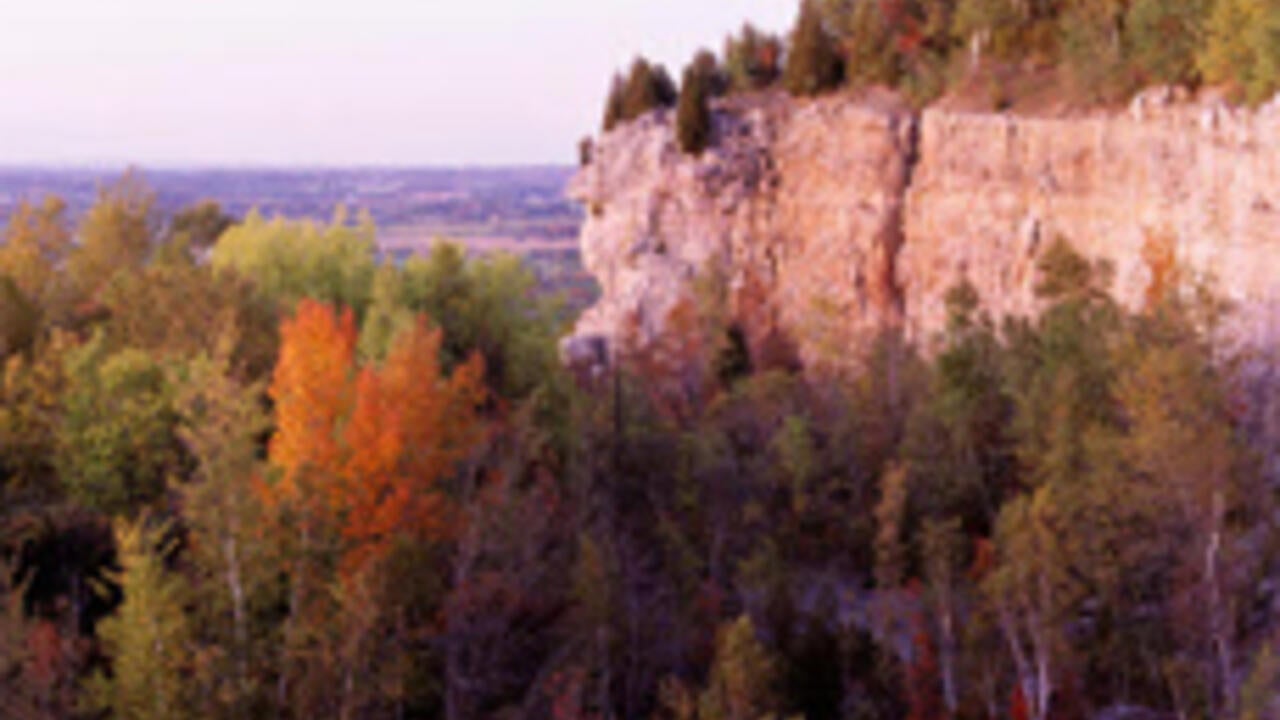
Protecting both nature and employment
Thanks to Waterloo, there are hundreds of biosphere reserves around the world – not parks or museums, but places that combine environmental protection and jobs.

Thanks to Waterloo, there are hundreds of biosphere reserves around the world – not parks or museums, but places that combine environmental protection and jobs.
By Staff Communications & Public AffairsInto the wild: biosphere reserves
Skyscrapers climb, roads get built, and around the world the human population explodes. How can we sustain the planet while still maintaining jobs and homes?
 The Niagara Escarpment is one of 15 UNESCO World Biosphere Reserves in Canada. Photo: Simon Wilson
The Niagara Escarpment is one of 15 UNESCO World Biosphere Reserves in Canada. Photo: Simon Wilson
Enter biosphere reserves, a concept with impact. An idea that has been ushered along into reality since the late 1960s and 1970s by George Francis, a retired environment and resources studies professor at Waterloo.
Biosphere reserves are special areas of land, or even coastal waters, that have found a way to combine environmental protection and sustainable jobs.
Here’s what they’re not: national parks, or environmental museums.
“There’s no way you can have part of the world kept natural and another part exploited to the hilt. So the only serious possibility for a future for our children is to figure out ways to have jobs and the environment at the same time. Biosphere reserves are doing that in practice,” says Robert Gibson, the environment and resources studies department’s principal investigator for its Biosphere Sustainability Project.
Today, Waterloo professors and students are researching how these links work at Ontario’s reserves. Meanwhile, Francis will continue to visit and review Canada’s iconic landscapes from Alberta’s mountainous Waterton to B.C.’s craggy Clayoquot Sound for UNESCO.
“People are learning how to live better in their own place,” he says. “That’s important.”

Read more
12 Waterloo students and postdoctoral fellows receive up to $10,000 in funding to develop their green-tech solutions

Read more
Zain Bandali publishes an early-reader chapter book that explores gender norms and sense of belonging in a community

Read more
World-class researchers shape new ways to foster happiness and personal well-being
The University of Waterloo acknowledges that much of our work takes place on the traditional territory of the Neutral, Anishinaabeg and Haudenosaunee peoples. Our main campus is situated on the Haldimand Tract, the land granted to the Six Nations that includes six miles on each side of the Grand River. Our active work toward reconciliation takes place across our campuses through research, learning, teaching, and community building, and is co-ordinated within the Office of Indigenous Relations.